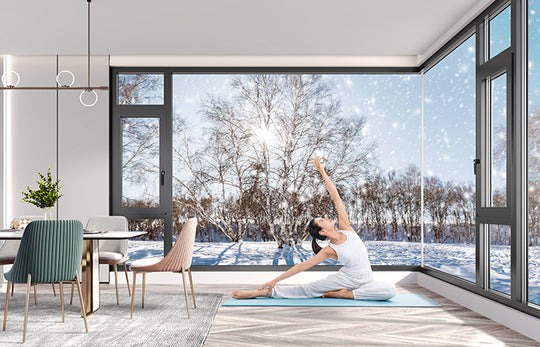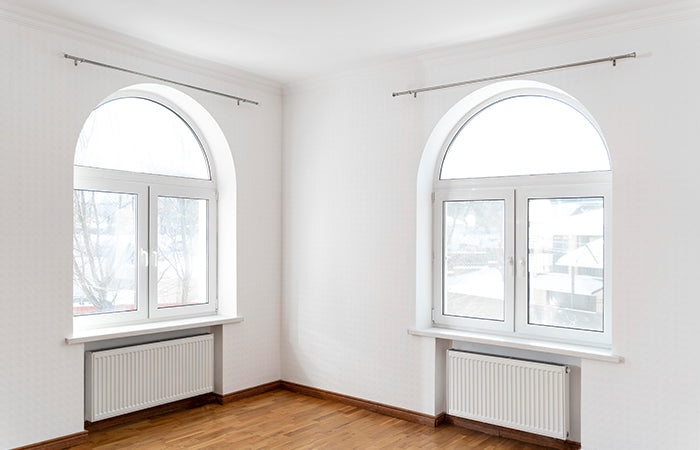
Open Up To Endless Possibilitie Swith Our Diverse Range Of Windows And Doors
What are Tilt and Turn Windows?
Tilt and turn windows are a type of window that can be opened in two ways: opening the entire window like a door or tilting the upper part of the window inward for ventilation. This allows for flexibility and versatility in controlling the airflow in a room. Tilt and-turn windows are often used in modern buildings and are popular for their sleek and functional design. Tilt and turn is one of the most energy-efficient open types.






What are Casement Windows?
Casement windows are windows that are attached to a frame on one side and swing open on the other side, similar to a door. They are typically hinged at the side and open outward, providing maximum ventilation and an unobstructed view.

Energy Efficiency
Casement windows provide a tight seal when closed, which can help to keep out drafts and reduce energy loss. They are particularly effective in preventing air infiltration when compared to traditional double-hung windows.

Enhanced Security
Casement windows are more difficult to break into than other types of windows because they have a hook-shaped lock that embeds into the frame, making them more secure.

Versatility
Casement windows come in a wide variety of sizes, colors, and style styles, and this versatility in diversity makes them a popular and versatile choice for most homes or buildings. They can be specially customized to meet your specific requirements and preferences.

What are French Windows?
French windows are a type of window composed of two panels that swing open from the middle, typically to a garden or patio. They are known as “French” because they originated in France in the 17th century, where they were used to provide a large entrance to balconies or gardens.
What are Slider Windows?
Slider windows, also known as sliding windows, are a type of window that consists of two or more sashes that slide horizontally along tracks at the top and bottom of the frame. They are often used in residential homes, particularly in areas with limited space, as they do not require additional space for the sashes to swing open like traditional windows.Sliding windows are windows with at least one sash sliding horizontally past another. They are widely used in modern construction for their simple and elegant appearance. Sliding windows are also very popular in the limited space especially, because they do not require additional space for the opening sash.


What are Awning Windows?
An awning window is a top-hinged window that opens outward from the bottom, usually operated by a hand crank. Awning windows are often used in combination with other types of windows and doors. They can be installed above doors to provide ventilation while ensuring the homeowners’ security and privacy. They can also be used in areas where space is limited, such as over a small bathroom or kitchen sink, allowing the window to swing. Moreover, awning windows provide excellent protection from the rain for their outward opening ways.
What are Pivot Windows?
Pivot windows refer to a type of window that is hinged at the bottom or top and can be rotated or pivoted on a central axis.
Compared with traditional sliding or hinged windows, pivot windows offer several merits. First, it provides better ventilation control because they are openable in different ways from the bottom and the top. It also offers greater flexibility in how they open and close, and it is often easier to maintain and clean them in life.
In addition to their practical benefits, pivot windows can also become a modern and stylish design feature in a home or store.


What are Picture Windows?
Picture windows are large, fixed windows that are aimed to offer an unobstructed view of the outdoors. They do not have any hardware or opening mechanisms. Picture windows are often the focal point of a room and are stunning views that provide a natural landscape or city skyline. Because picture windows cannot be opened and moved, they are often used where ventilation is not required, for lighting and viewing only, and are often used in walkways, stairwell light windows, high walls or spaces, and in places that are difficult to reach and touch. They can also be combined with other window types to create a different style, such as double-hung or casement windows, to provide a balance of ventilation and natural light.
You May Like
-
 3 tracks sliding window aluminum slide and swing windows$135.00
3 tracks sliding window aluminum slide and swing windows$135.00 -
 3 track sliding window lock aluminium sliding window$135.00
3 track sliding window lock aluminium sliding window$135.00 -
 24×24 Aluminium alloy sealing balcony casement window$135.00
24×24 Aluminium alloy sealing balcony casement window$135.00 -
 16 inch tall exterior aluminum alloy soundproof sliding window$135.00
16 inch tall exterior aluminum alloy soundproof sliding window$135.00 -
 90 Degree Inward Opening Model Thermal Break Aluminum Casement Windows ManufacturerProduct on sale$115.00
90 Degree Inward Opening Model Thermal Break Aluminum Casement Windows ManufacturerProduct on sale$115.00 -
 72×36 71.25×35.25 White Thermal Break Aluminum Sliding Windows With Low-E Glass & Grilles Between Glass$0.00
72×36 71.25×35.25 White Thermal Break Aluminum Sliding Windows With Low-E Glass & Grilles Between Glass$0.00 -
 60×60 59.5×59.5 White Vinyl Sliding Window With Colonial Grids Grilles$0.00
60×60 59.5×59.5 White Vinyl Sliding Window With Colonial Grids Grilles$0.00 -
 24×24 23.5×23.5 Vinyl Sliding Window With Colonial Grids Grilles$0.00
24×24 23.5×23.5 Vinyl Sliding Window With Colonial Grids Grilles$0.00
